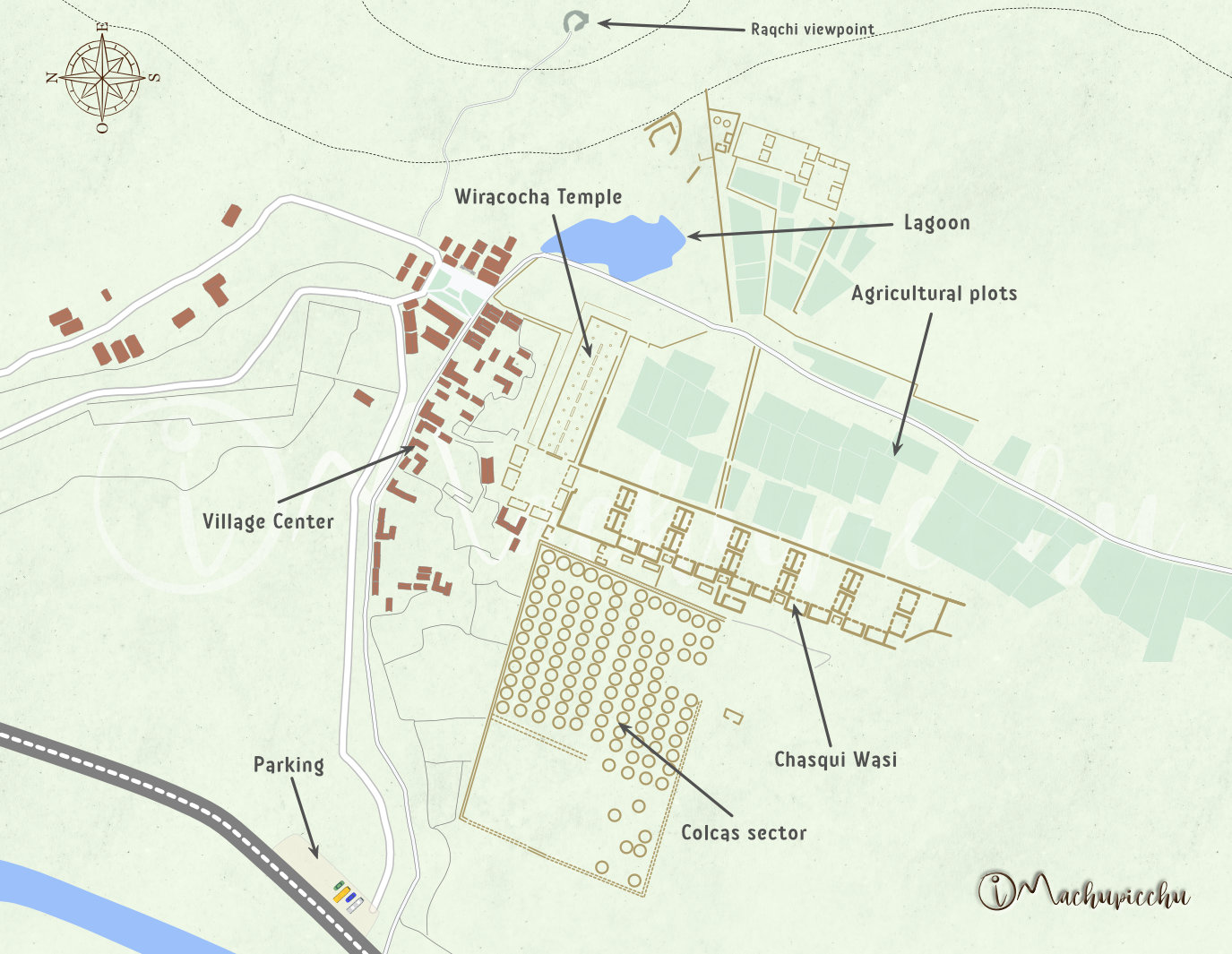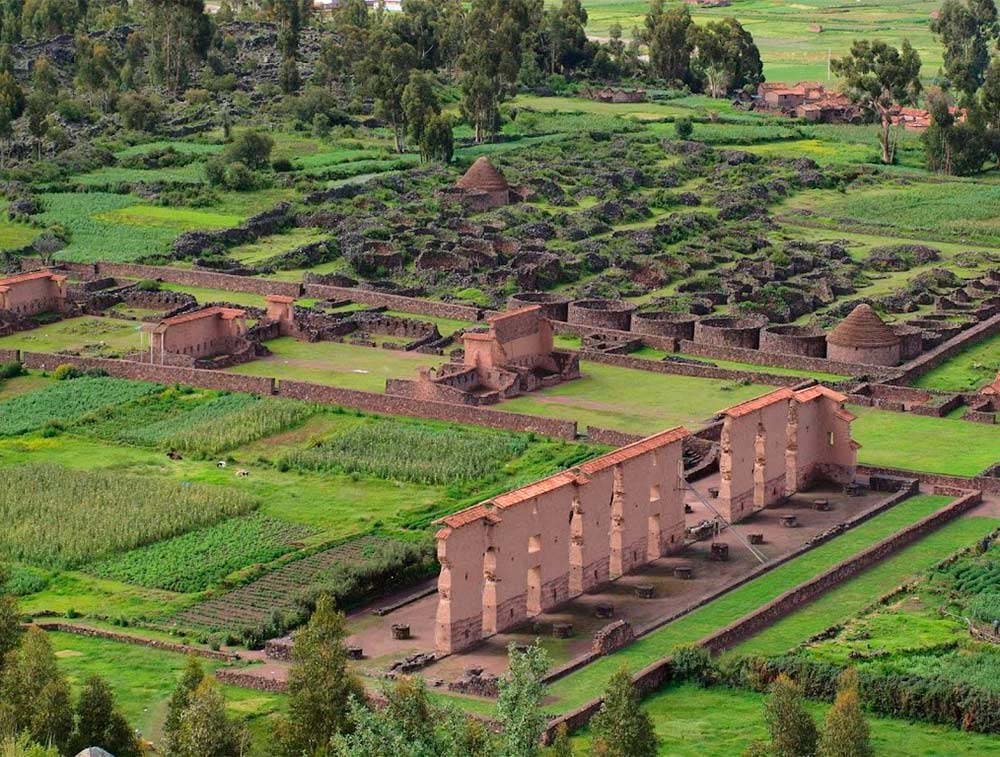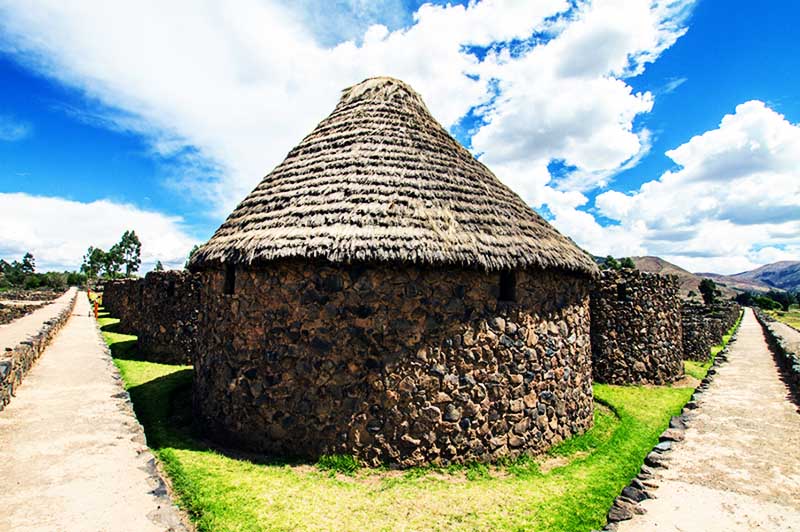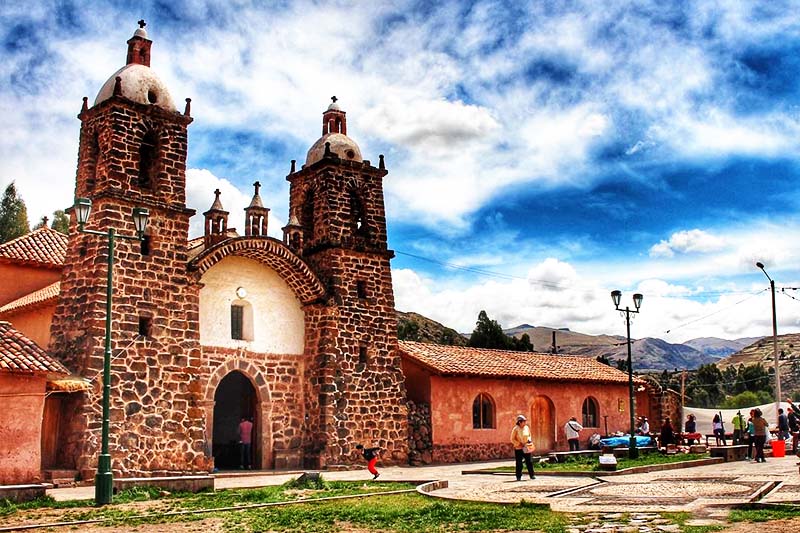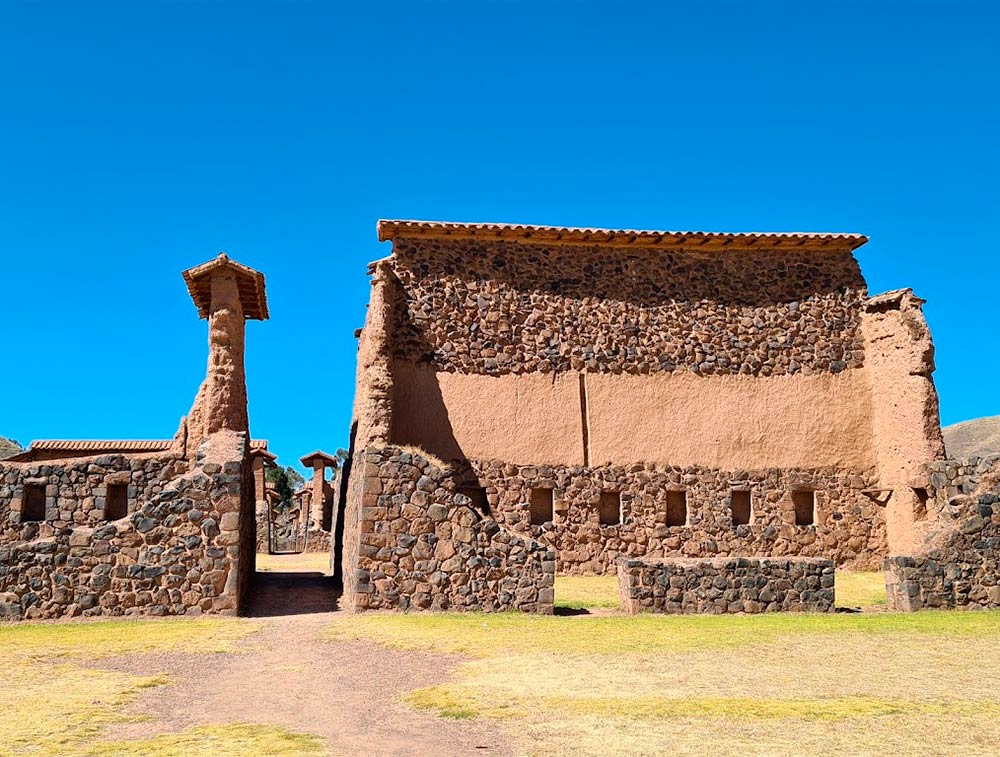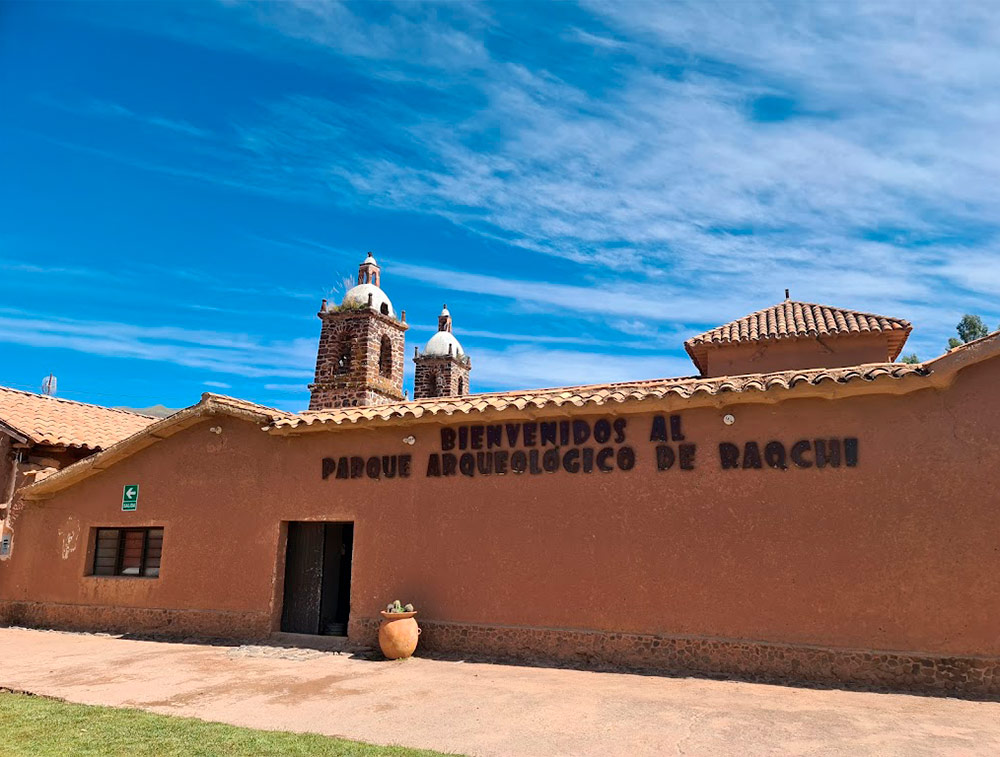The Temple of Wiracocha in Raqchi
The Temple of Wiracocha is the most famous construction of the archaeological site of Raqchi in Cusco. Its name is related to the god Huiracocha, creator of the world according to many ancient cultures of the coast and mountains of Peru. It is a temple over 14 meters high, the tallest Inca structure discovered to date. To visit this famous place you must travel south of Cusco. The entrance to Raqchi has a cost of 10 Peruvian soles.
- The archaeological complex of Raqchi
- The temple of Wiracocha
- The god Wiracocha
- Other buildings in Raqchi
- Site Map
- The Inca trail of Raqchi
- Photo gallery
- What else to do?
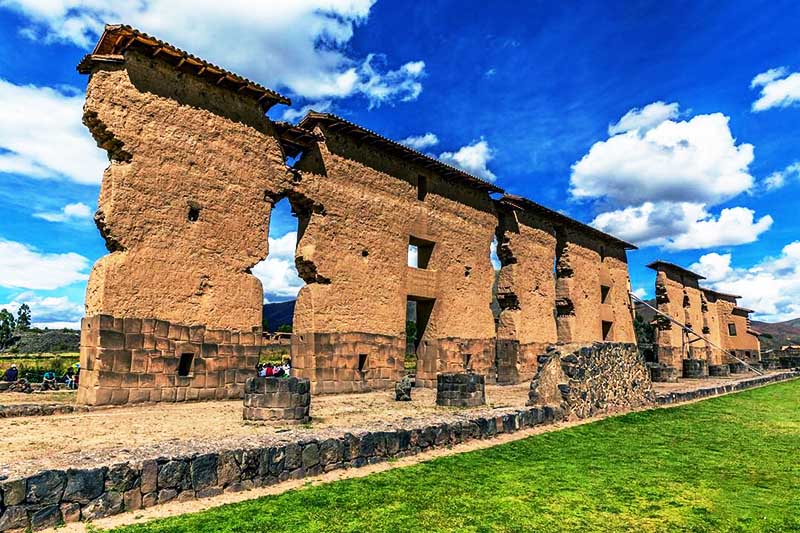
The Temple of Wiracocha – Raqchi
The archaeological complex of Raqchi
- The archaeological complex of Raqchi is an area where the Incas they erected emblematic constructions of immense dimensions.
- It is also known as the Temple of Wiracocha because this is its most emblematic construction.
- It is located in the San Pedro district, Canchis province, 119 kilometers from the city of Cusco.
- According to various chroniclers, the bold walls of Raqchi were made of stone and adobe during the periods of rule of the Incas Viracocha, Pachacutec and Túpac Yupanqui in the 15th century.
- However, ceramic remains belonging to pre-Inca cultures such as Marcavalle, Pucará and Wari have recently been found.
- The place grows year by year in tourism. The specialists divided the site into 5 sectors: the Temple of Wiracocha, the Greater Inca Temple, the warehouses, the statue, the enclosures and the water sources.
The temple of Wiracocha
- This unique temple stands out for presenting immense stone and adobe walls up to 14 meters high.
- It is located on an esplanade and has two naves with windows and doors built on an andesite stone base.
- The structure that survived the destruction caused by the Spanish invasion had a gabled roof supported by columns up to 25 meters high at its highest point.
- For many historians, the large size of its constructions must have made this temple the most proportional in the Inca Empire. The greatness of this construction earned it the name of ‘Temple of Wiracocha’.
The god Wiracocha
- The worship of the god Wiracocha long predates the Incas. Investigations account for their worship from the Caral culture (3,000 BC – 1,800 BC), more than 4,000 years before the appearance of the Incas.
- The god Wiracocha was also present in ancient Peruvian cultures: Chavín (1,200 BC – 400 BC), Paracas (700 BC – 200 AD), Tiahuanaco (1500 BC – 1,187 AD), Wari (100 AD – 1,200 AD ) and more.
- Wiracocha is also called the ‘God of the staffs’ as he is represented with rods in both hands. It is also usually represented with rays of sun on the face, raindrops like tears and a feline face.
- For most cultures, Wiracocha is credited with creating the world, the sun, the moon, the stars, and the entire universe. For the Incas he was also the creator god. However, the god most worshiped by them was the sun or inti .
- Due to the worship of this god, the Inca Hatun Tópac was called Huiracocha. The chronicler Garcilaso de la Vega says that the Inca dreamed that the god Wiracocha gave him advice for his government. For this reason, it was this Inca who ordered the construction of the Raqchi temple.
Other buildings in Raqchi
In total, Raqchi is made up of an area of approximately one thousand hectares. Different constructions such as aqueducts and even underground tombs were found in the surroundings of the main buildings of the enclosure. The Wiracocha temple is not the only important building in the place. Here are the sectors that stand out in Raqchi.
- The Greatest Inca Temple – A construction with a similar characteristic as the Temple of Wiracocha. Its walls have similar proportions to the main temple. The base is made of finely carved stone and finished with adobe. Of the eleven cylindrical columns that supported the roof, only one survives. Only the excavated foundations are visible from the walls.
- The warehouses – The warehouses or colcas were warehouses of food products such as corn, quinoa, potatoes and chuño. It is estimated that in Raqchi there are an average of 200, which were circular in shape and arranged along the axis of the main temple.
- The statue – During the excavations of a Spanish scientific mission in 1981, a stone representation and his body were found. Scientists maintained that it was a statue of Wiracocha. Currently, the face is in the Museum of America in Madrid. The body, in the Inca Museum of Cusco.
- The enclosures – It is a total of 22 constructions whose finely finished walls have abundant trapezoidal niches. These types of houses or barracks are deployed next to esplanades or patios proportional to the buildings.
- The water sources – This is an esplanade located to the east of the main temple and from whose walls spring water flows. There is the so-called ‘Baños del Inca’, which stands out for its finely carved stone.
Site Map
The Inca trail of Raqchi
- Raqchi was part of the ancient network of roads that connected the corners of the Tahuantinsuyo, known like Inca Trail or qhapac ñan.
- Due to its strategic location, Raqchi connected with important points such as Tiahuanaco in Bolivia to Tucumán in Argentina.
- To feed the messengers (chasquis) who traveled great distances to keep the Empire communicated, so many warehouses or colcas were built.
- Also, Raqchi must have been a resting place for these walkers. Currently, a large part of these roads have disappeared due to the proliferation of modern houses and buildings. It is believed that on part of these ancient Inca roads the Spanish built churches in order to extirpate the culture and belief of the Incas.
What else to do?
In addition to Raqchi in the south of Cusco there are several towns and archaeological sites of Inca origin that are worth visiting. Here are some of these:
- The archaeological site of Tipón – Tipón is an Inca site where water was worshiped. This is demonstrated by its perfect channels that continue to pour water to this day. It also has large gardens, terraces, temples, minor buildings and more. The chronicles mention that it was the palace of the rulers Yahuar Huacac and Huiracocha. Today is part of the tour to the ‘South Valley of Cusco’.
- The archaeological site of Piquillacta – Piquillacta was a city of the Wari culture (pre-Inca) located south of Cusco. Its constructions covered approximately 50 hectares between 600 AD and 1,000 AD. It is believed that this citadel housed about 10,000 people. It featured passages, plazas, multi-story enclosures, temples, and more. Today it is one of the tourist attractions included in the tour to the ‘South Valley of Cusco’.
- The church of San Pedro de Andahuaylillas – This Christian temple is one of the most famous in Cusco due to its beautiful murals and baroque decoration that earned it the name of ‘The Sistine Chapel of America’. It was built between 1570 and 1606. A good part of its canvases and murals were created by the artist Luis de Riaño in the 17th century. It is located in the town of Andahuaylillas. The visit to this place is also part of the ‘South Valley of Cusco’ tour.
By Ticket Machu Picchu – Last updated, August 15, 2024
